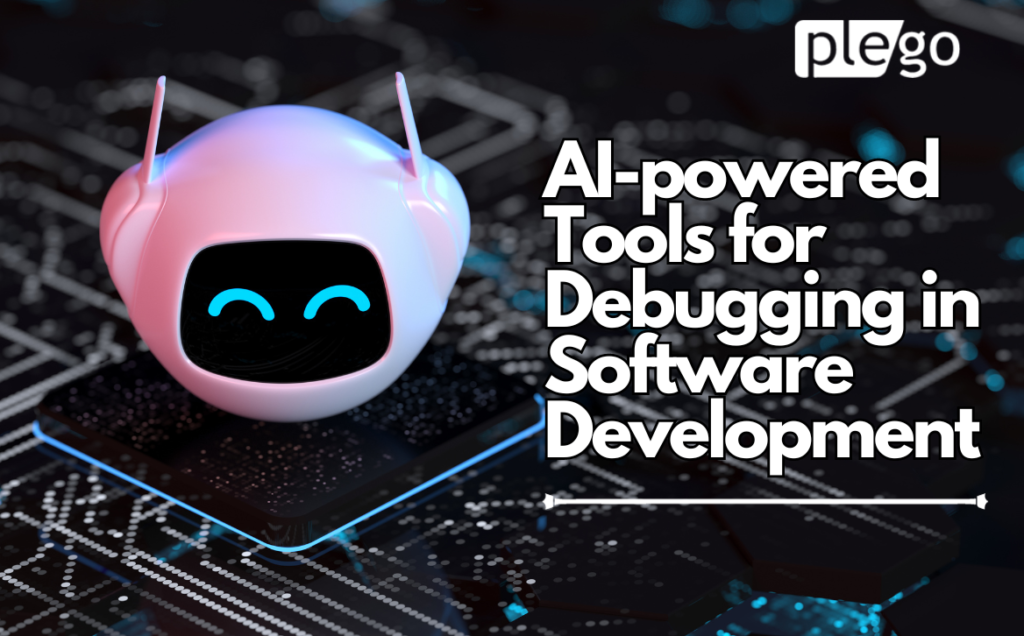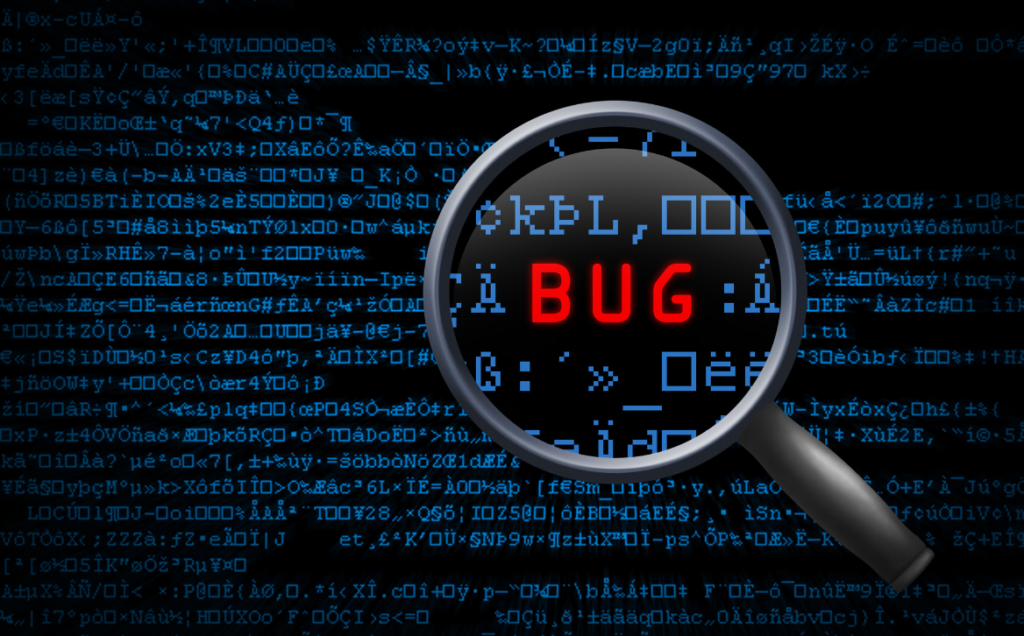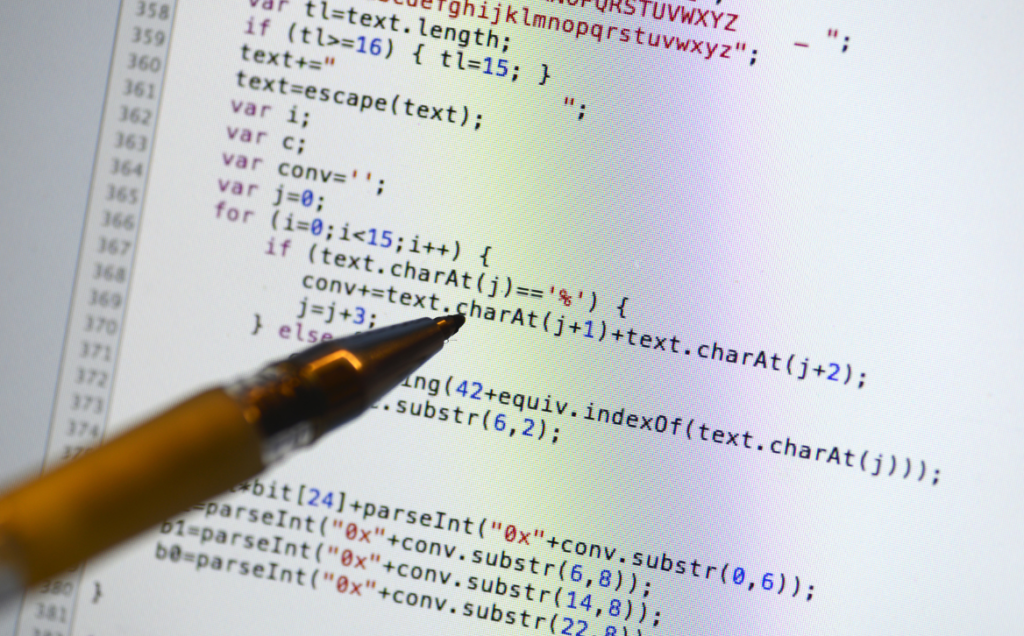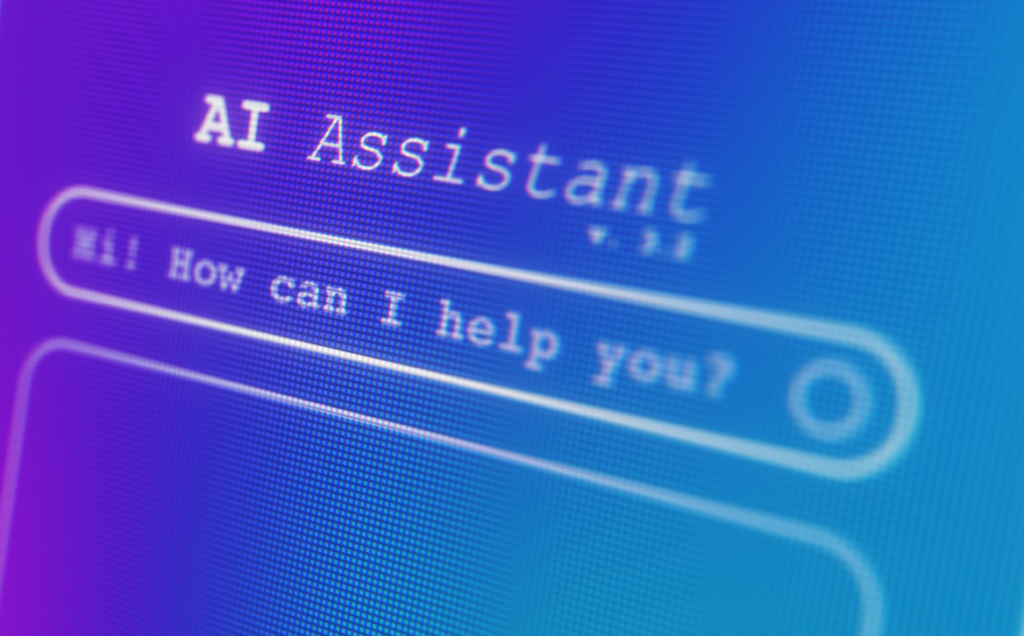AI-powered Tools for Debugging and Testing in Software Development – A Complete Guide

Software development is an intricate, ever-evolving craft that hinges on precision and reliability. The success of any software project, whether it’s a cutting-edge application or a critical business system, is fundamentally tied to the quality of the code that underpins it. Two vital aspects of ensuring software quality are debugging and testing.
Table of Contents
- The Importance of Debugging and Testing in Software Development
- The Growing Role of AI in This Process
- Understanding Debugging and Testing
- The Impact of Effective Debugging and Testing on Software Quality
- How AI Affects Software Development
- AI’s Significance for Software Development
- Challenges in Traditional Debugging
- AI-powered Debugging Tools
- AI-driven Testing Solutions
- Success stories that illustrate the effectiveness of AI.
- Choosing the Right AI-Powered Tools for Debugging
- Negative Impact on Business Operations
- ROI, Growth and Other Benefits
- Wrap up
The Importance of Debugging and Testing in Software Development
Debugging and testing are the twin pillars of software quality assurance, and their significance cannot be overstated. Debugging is the process of identifying and eliminating errors or defects in the code, ensuring that the software functions as intended. It’s the fine-toothed comb that roots out any hidden glitches, ensuring a smooth user experience. On the other hand, testing encompasses a broader scope, focusing on validating that the software meets its specified requirements and performs reliably in real-world scenarios.
The implications of inadequate debugging and testing are substantial. Bugs and errors can lead to software crashes, data loss, security vulnerabilities, and, most detrimentally, erode the trust and confidence of end-users. In the worst-case scenarios, software defects can lead to substantial financial losses and damage to a company’s reputation. Therefore, debugging and testing stand as critical safeguards against these potential disasters, assuring software reliability, functionality, and security.
The Growing Role of AI in This Process
As software systems become increasingly complex and the demand for rapid development and deployment grows, traditional methods of debugging and testing face new challenges. This is where the rise of artificial intelligence (AI) in the realm of software development comes to the forefront. AI is no longer confined to science fiction; it is now a vital tool in the hands of developers and businesses, reshaping how software is created, tested, and maintained.
AI has transformed debugging and testing from manual, time-consuming processes into intelligent, automated solutions. It can identify and predict potential issues, recommend solutions, and even execute debugging tasks, reducing the burden on developers and expediting the development lifecycle. The result is not just faster and more efficient software development but also a dramatic reduction in the potential for human error.
Understanding Debugging and Testing
Debugging and testing are like quality control processes in the world of software development, and no one needs to be a tech expert to grasp their importance.
-
Debugging
It is the process of finding and fixing errors or problems in the software. Think of it as identifying and correcting mistakes in a document before it’s published. Just like you’d want a book without typos, software needs to be free of errors to work smoothly.
-
Testing
It is like putting software through a series of tests to make sure it behaves as expected. Imagine a car going through various road conditions to ensure it doesn’t break down under any circumstances. Similarly, software is tested to ensure it works well for users.
The Impact of Effective Debugging and Testing on Software Quality

Effective debugging and testing are like quality control checkpoints. They ensure that the software you use is reliable and free from major issues.
-
Quality Software
Debugging and testing help create high-quality software. A well-debugged program is less likely to crash or have annoying glitches. This means your software works as intended, without causing frustration or disruptions.
-
User Experience
Effective debugging and testing contribute to a positive user experience. Just as you’d enjoy using a well-made product, software that’s thoroughly debugged and tested provides a smooth, hassle-free experience. Users can trust it to perform its tasks correctly, which is vital in today’s tech-driven world.
How AI Affects Software Development
Artificial Intelligence (AI) is a game-changer in many different industries, transforming how companies innovate and run. An overview of its importance is provided here:
-
Medical Care
AI helps in drug development, patient care, and medical diagnostics, resulting in more precise and effective healthcare services.
-
Finance
Predictive analytics, risk assessment, and fraud detection are powered by AI, which helps people make wiser financial decisions.
-
Retail
AI improves inventory control, streamlines the supply chain, and personalizes interactions with customers.
-
Production
Automation powered by AI improves efficiency and product quality by streamlining quality control and production procedures.
-
Automotive
Artificial Intelligence powers modern driver assistance systems and self-driving automobiles, increasing road safety and convenience.
-
Education
AI helps teachers customize lessons for each student and helps them adapt the material to their needs.
-
Agriculture
Farming precision powered by AI improves crop management, resulting in higher yields and more environmentally friendly farming methods.
-
Energy
AI helps control the grid, optimizes energy use, and tracks equipment health for a more sustainable energy industry.
-
Entertainment
By producing music, enhancing special effects, and making content recommendations, AI provides users with more individualized entertainment experiences.
-
Customer Relations
Virtual assistants and chatbots powered by AI offer round-the-clock assistance, enhancing interaction and customer service.
AI’s Significance for Software Development
AI is a key component of software development as well as a game-changer for other industries. Ai provides:
- Efficiency
- Quality Assurance
- Predictive analysis
- Personalization
- Innovation
Artificial Intelligence (AI) is revolutionizing software development by improving productivity, creativity, and quality. It assists developers in producing software that is intelligent, user-focused, and functional in addition to being relevant and essential in today’s digital environment.
Challenges in Traditional Debugging

Limitations of Traditional Debugging and Testing Methods
While old-school debugging and testing techniques are helpful, they do have their own set of following restrictions.
- Manual Labor
- Incomplete Testing
- Resource-intensive
- Limited Predictive Power
- Incompatibility with Rapid Development
How These Restrictions Shape Business Outcome
Using old-fashioned testing and fixing methods can seriously impact a business with:
- Problems with Quality and Reliability
- Cost Overruns
- Slower Time-to-Market
- Reduced User Satisfaction
- Diminished Innovation
Businesses are increasingly using AI-powered testing and debugging solutions to address these issues. These technologies hold the potential to improve software quality, accelerate development cycles, and lessen the impact of software problems on enterprises through more effective, thorough, and predictive ways.
AI-powered Debugging Tools

In the constantly changing world of software development, AI-driven debugging tools are set to bring about a fresh era. These innovative tools harness the power of artificial intelligence to empower developers in swiftly identifying and resolving bugs within their code.
What’s truly remarkable is their ability to not only scrutinize code for potential errors but also offer insightful solutions while unraveling the intricacies of the code to developers.
While AI-powered debugging tools are still in their developmental phase, their potential to reshape the debugging landscape is nothing short of revolutionary.
These tools act as the guiding hand, taking on many of the time-consuming tasks involved in debugging, thereby liberating developers to channel their energies into more imaginative and strategic pursuits.
Leading the Charge: AI-Powered Debugging Tools and Their Real-World Applications
Here are some of the cutting-edge AI-powered debugging tools leading the charge:
-
DeepCode
With the mastery of deep learning, DeepCode serves as a static code analysis tool proficient in identifying bugs and security vulnerabilities across various programming languages like Java, Python, C++, and JavaScript.
-
SinCode
SinCode is an AI-driven debugging tool that accelerates the bug-hunting process. Powered by machine learning, it meticulously scans code for potential errors and provides actionable solutions.
-
DebugCode.ai
As a free AI-powered debugging tool, DebugCode.ai comes to the aid of developers seeking swift and hassle-free debugging across all programming languages, from Java to JavaScript, C++, and Python.
-
Testsigma
One of the most well-known AI testing tools in the market is Testsigma. It makes it possible for automation engineers and QA analysts to design automated tests for desktop, mobile, and API apps. It stands out for having strong auto-healing skills that accurately fix mistakes. Moreover, team leaders and manual testers can effectively carry out tests in parallel.
-
TestCraft
Based on Selenium, Perfecto’s TestCraft is an AI-driven solution for test automation. Its compatibility for both automated and manual testing sets it apart. This tool can grow to meet the highest quality standards in the industry and performs exceptionally well at providing tests for web-based software quickly. Additionally, it has outstanding features made for executing repeated tests.
-
ACCELQ
Web, mobile, desktop, APIs, and backend systems are just a few of the domains where multi-channel test automation may be enabled using ACCELQ, a powerful AI-driven codeless solution. Through the integration of business process-focused automation throughout the entire technological stack, it facilitates both comprehensive business assurance and continuous test automation.
These tools have found homes among developers at tech giants like Google, Microsoft, and Amazon, offering their debugging prowess across a spectrum of applications, be it web platforms, mobile applications, or desktop software.
AI-Powered Debugging Tools’ Impact on Debugging Efficiency
The transformative potential of AI-powered debugging tools in boosting debugging efficiency is undeniable. Here are a few key ways in which these tools make a significant impact:
-
Automation of Debugging Tasks
These tools excel at automating the often tedious tasks associated with debugging. From identifying potential errors to suggesting viable solutions and demystifying complex code, AI-powered debugging tools allow developers to redirect their energies towards creative and strategic work.
-
Detection of Elusive Bugs
AI-powered debugging tools have a knack for uncovering bugs that tend to evade manual detection. This includes intricate issues such as race conditions and concurrency errors, which are often beyond the human eye’s capacity to discern.
-
Enhanced Code Comprehension
These tools bridge the gap in understanding between developers and their code. By offering lucid explanations and insights into the code structure, they empower developers to pinpoint and rectify bugs with greater ease and speed.
AI-driven Testing Solutions
AI-driven testing and debugging solutions are transforming software development. They automate testing processes, swiftly uncovering issues, and enhancing overall quality.
In debugging, they’re developers’ allies, pinpointing and offering solutions for bugs. This synergy not only fortifies software but also boosts efficiency, allowing developers to focus on creative aspects.
As AI evolves, these tools will continue to play a pivotal role, ensuring high-quality software with greater efficiency.
AI-powered frameworks for testing
One kind of AI-driven testing solution that offers a full suite of tools for automating the software testing process is an AI-driven testing framework. Performance, regression, and functional testing are just a few of the testing jobs that these frameworks can be utilized to automate.
The following are a few advantages of utilizing AI-driven testing frameworks:
-
Automation testing
AI can be used to automate a number of repetitive and time-consuming testing operations, including the creation of test cases, carrying out tests, and reporting on results. Developers and QA teams may be able to concentrate on more difficult and important jobs as a result.
-
Better Testing
AI can make more kinds of tests than people can. This means fewer chances of missing important stuff and more thorough testing.
-
Improved test accuracy
Compared to manual testing, artificial intelligence (AI) can find and resolve flaws more accurately. This is so that AI can gradually enhance its testing techniques by learning from previous test outcomes.
Success stories that illustrate the effectiveness of AI.
The following case studies highlight the efficacy of AI-driven debugging and testing solutions:
-
Google
A lot of the testing for its search engine and other products is automated by Google using AI. Thanks to this, Google has been able to cut the testing period for new software releases by up to 50%.
-
Microsoft
Several of the tests for its Windows OS and other products are automated by Microsoft using AI. Microsoft has been able to decrease the amount of customer support tickets and enhance the quality of its products as a result.
-
Amazon
A lot of the testing for its e-commerce platform and other items is automated by Amazon using AI. Because of this, Amazon has been able to cut the time it takes to test new software releases by as much as 70%.
Choosing the Right AI-Powered Tools for Debugging
When it comes to selecting AI-powered tools for debugging, software developers should prioritize those that offer features like automated bug detection, code analysis, and real-time monitoring. Additionally, the tool should be compatible with the programming language and development environment that the developer is working with.
Another important consideration is the ease of use and integration with existing workflows. The tool should be intuitive and user-friendly, allowing developers to quickly identify and resolve issues without disrupting their usual processes.
Developers need to ask the following questions of themselves before choosing a helping tool.
- What Does the Tool Do?
- Is It Scalable?
- Does It Work with My Stuff?
- Is It Easy to Use?
- Does It Get Things Right?
- Is It Customizable?
- Does It Provide Help and Instructions?
- How Much Does the Tool Cost, and What Are the Payment Options?
- Are There Any Reviews of the Tool?
- How Secure Is It?
- What’s Its Speed?
- The Technology Behind It
- Is It Suitable for Long-Term Usage?
Negative Impact on Business Operations
Implementing AI-powered debugging and testing can have several positive effects. However, avoiding implementation can result in various negative consequences, including:
- Expense increases
- Decreased productivity
- The risk of shipping defective software increased
- Increased risk of non-compliance
Examples of cost savings and improved customer satisfaction who use these tools
A number of businesses have reported significant cost savings and improved customer satisfaction after implementing AI-driven debugging and testing tools. For example:
-
Google
According to Google, debugging tools with AI capabilities have slashed the time it takes to fix errors by up to 50%.
-
Microsoft
According to Microsoft, up to 30% fewer flaws have been found in its software thanks to AI-powered debugging tools.
-
Amazon
According to Amazon, up to 10% more customers are now satisfied with its cloud computing services thanks to AI-powered debugging tools.
All things considered, using AI-driven debugging and testing tools can improve corporate operations in a number of ways, including lower expenses, higher output, better quality, and lower risk.
ROI, Growth and Other Benefits
A study by Forrester found that AI-powered debugging tools can help companies save an average of 20% on their testing costs. Another study by McKinsey found that AI can help companies reduce the time it takes to release software by up to 50%.
By producing high-quality software on schedule and within budget, AI may assist businesses in increasing customer happiness and brand reputation in addition to these immediate cost benefits.
AI may give businesses a competitive edge in the market, increase software quality, and save time and money.
AI solutions benefit businesses financially and assist CEOs in accomplishing strategic objectives like increasing market share through quicker product creation. It also enhances customer satisfaction by improving software quality and performance.
ROI of using AI in debugging and testing
AI-powered debugging and testing tools can help companies save time and money by:
- Bug Reduction
- Software Enhancement
- Task Automation
- Engineer Freedom
Wrap up
To wrap things up, AI is changing how we write and test code, and this shift is quickly changing the way businesses compete. AI-driven debugging tools bring a lot of advantages to developers, business owners, and CEOs. These tools don’t just help find and fix mistakes faster, but they also make the software better and cheaper to develop.
When it comes to handing over software, apps, websites, and mobile apps to clients, we always make sure they are top-notch and on time. Using AI tools is a big part of how we keep things high-quality. If you ever struggle with using these tools or need help with any online solutions, don’t hesitate to Contact Us. We’d love to help turn your ideas into success.

